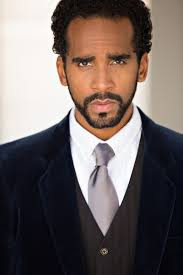By Antonio? ?Ray? ?Harvey? ?|? ?California? ?Black? ?Media?
Assemblymember Rhodesia Ransom (D-Stockton) says she understood before she was elected to office last year that Californians pay among the highest electricity rates in the country.
So, lowering that cost – and that of other utility bills — has become her top priority.
A member of the California Legislative Black Caucus (CLBC), Ransom, on her first day on the job in December, introduced Assembly Bill (AB 13). If passed, the legislation will reform the five-member California Public Utilities Commission (CPUC) and hold its regulators more accountable, providing residents with the transparency, she says, they deserve regarding how their bills are increased.
“This is necessary because (CPUC) oversees the utilities companies that request rate hikes,” Ransom told California Black Media (CBM). “So far, that has been happening but we as the public don’t understand that the CPUC is not an elected body. It is an appointed body. They don’t have to answer to constituents who hold them accountable.”
Ransom represents California’s 13th Assembly District, which includes the communities of Stockton, Tracy and Mountain House. A former Tracy City Councilmember, Ransom was elected to office in the November General Election and is one of nine Black women legislators that are part of the 12-member CLBC.
“We need to ensure that decisions affecting utilities are made with fairness, transparency, and accountability, prioritizing affordability for Californians,” she stated.
The CPUC is a state regulatory agency that was created by a constitutional amendment to regulate privately owned telecommunications, electric, natural gas, water, railroad, rail transit, passenger transportation, and in-state moving companies.
The CPUC is responsible for ensuring that California utility customers have dependable utility service at less expensive rates, protecting utility customers from acts of deception, and promoting the well-being of California’s economy. The agency has a staff of approximately 940 employees.
The commission’s board, which typically meets twice a month, is comprised of five members with a president. Board members are appointed by the Governor and serve six-year terms. The current commissioners are Alice Busching Reynolds, Darcie L. Houck, John Reynolds, Karen Douglas, and Matthew Baker.
Busching-Reynolds is the President.
AB 13 would require that four members of the commission represent the geographic locations of the four State Board of Equalization districts. The bill would require that one member be an at-large member with unspecified qualifications.
“We all wonder sometimes how they make their decisions, how they are approving these rates and are they putting people first,” Ransom said. “They are a part of the California Constitution. They are appointed by the Governor. The Constitution does say they are supposed to be accountable to the Legislature, but the Governor gets to appoint them.”
Ransom continued, “So far, the legislature does not play a big role in what they do. We do get reports from them, but we should be getting a little bit more.”
Additionally, AB 13 would prohibit an elected member of, or an employee of, the Legislature or an employee of the executive branch from serving as a member of the commission within one year after leaving the position as an elected member or employee.
Ransom said she has been working in earnest with stakeholders and her legislative colleagues for months to make sure the bill is a pathway for workable policies that will result in “accountability, accessibility, and transparency” to avoid the rate increases that have constrained many consumers.
AB 13 has been referred to the Assembly Committee on Utilities and Energy, where amendments will be made to further align the bill with its intended goals.
The introduction of AB 13 came six weeks after Gov. Gavin Newsom signed an executive order designed to reduce electric costs for Californians. The CPUC and California Energy Commission (CEC) were tasked to examine ways to trim programs that would save money on electric bills.
The Governor’s action aimed to provide electric bill relief while maintaining the state’s commitment to achieving carbon neutrality and 100% clean electricity by the year 2045.
Last year, millions of state residents received an average credit of $71 on their October electric bills from the California Climate Credit, provided by the state’s Cap-and-Trade program.
The climate credit provides ratepayers with their share of the benefits of California’s Cap-and-Trade Program, according to CPUC. The credits are issued twice a year – a natural gas credit in April and electric credits in April and October.
“We’re taking action to address rising electricity costs and save consumers money on their bills,” Newsom stated on Oct. 30. “California is proving that we can address affordability concerns as we continue our world-leading efforts to combat the climate crisis.
On Feb. 18, CPUC released a document titled “Response to
Executive Order N-5-24,” a 38-page document that recommends examining the benefits and costs to electric ratepayers, taking action to modify or sunset any underperforming or underutilized programs, and consulting with the Office of Energy Infrastructure Safety on adjustments to utility wildfire safety oversight processes, procedures, and practices.
Assembly Minority Leader James Gallagher (R-Yuba City) discounted the report, calling it “useless.” However, he said the document confirmed that there is another problem.
“A newly released report shows there is plenty of waste in our electricity rates that has never been reviewed for cost-effectiveness,” Gallagher posted Feb. 19 on X. “Mandates and subsidies make our rates some of the highest in the nation. Enough.”
Ransom said working Californians cannot afford another rate hike or price increase.
“We just want to make sure that people in the position can look out for our best interests,” Ransom told CBM.
 Westside Story Newspaper – Online The News of The Empire – Sharing the Quest for Excellence
Westside Story Newspaper – Online The News of The Empire – Sharing the Quest for Excellence


